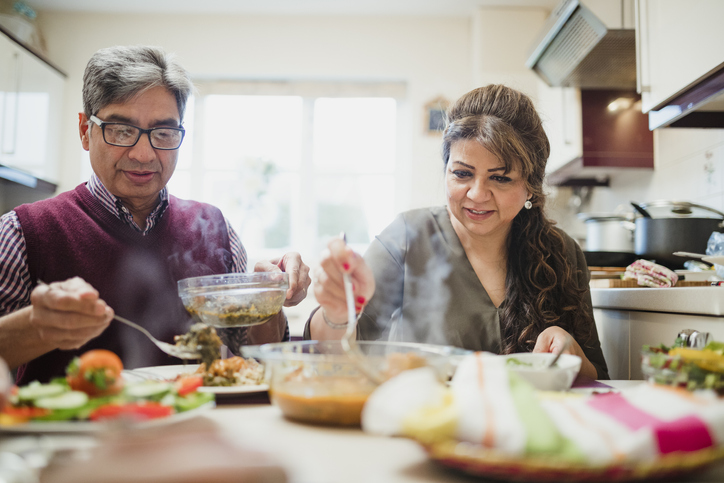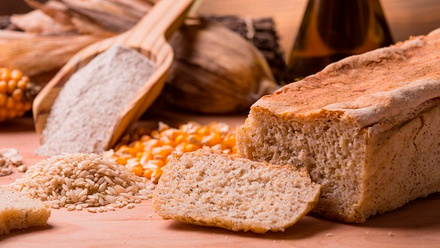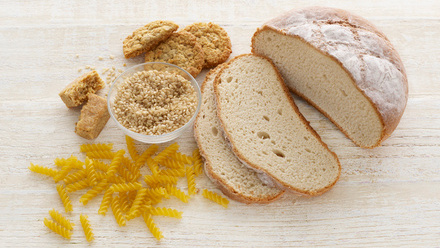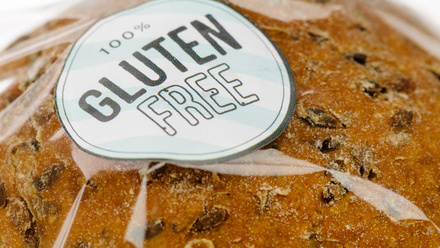Living gluten free in the UK as a British South Asian
More needs to be done to support British South Asians who suffer from coeliac disease, say Sefinat Somorin, Humayun Muhammad and Yvonne Jeanes.
Coeliac disease (CD) is a multisystem disorder, with villous atrophy of the small bowel mucosa leading to malabsorption of nutrients. It is an autoimmune disease characterised by a permanent intolerance to gluten, a protein found in wheat, barley and rye.
In most cases, the condition responds to a gluten-free (GF) diet only to relapse after reintroduction of gluten. The global prevalence rate of coeliac disease is ~1.4%, with variations in people of different ethnicities.1 CD is not uncommon in Asia; a meta-analysis of 18 studies reported prevalence to be 1.6%,2 and a small study in the UK reported a higher prevalence of 3% in patients from the Punjab region living in the UK.3

‘South Asian’ refers to people with heritage from the Indian subcontinent (India, Bangladesh, Pakistan and Sri Lanka), being mindful that this encompasses diverse ethnic groups with distinctive regions of origin, languages, religions and customs.
Adhering to a GF diet can be very challenging – it requires knowledge, skills, access to GF foods and modified behaviours to undertake substantial changes to dietary habits, including within social situations; this review will focus on British South Asians with CD living GF in the UK.
Living gluten free in the UK
South Asian cuisine is renowned for its rich flavours, diverse ingredients, and complex cooking methods. Within northern India and Pakistan, flat bread (roti/chapattis), derived from wheat flour, is one of the most important constituents of every meal, whereas in southern India rice is a staple food.4
Back in 2004, a study in Birmingham reported that understanding of food labelling, obtaining sufficient gluten-free products and regular dietetic follow-up were associated with better GF dietary adherence with Caucasian patients, though not so for South Asian patients, and the authors drew attention to the need to improve the treatment and support offered to this community.5
More recently, in 2016, a study in Leicester reported no real improvement, with a higher proportion of South Asians with CD reporting difficulties following the GF diet compared with Caucasians, and South Asians more likely to agree with the statements “I don’t understand what foods I can and cannot eat” and “I don’t understand food labelling”.6 Difficulties adhering to the GF diet were still evident disproportionately for South Asian patients in 2019.7
Online resources for CD are in English with minimal information in alternative languages.8 In 2020, Farrukh and Mayberry highlighted the need for health workers to show cultural competence and sensitivity to overcome barriers to living GF. The recruitment of faith based and ethnic professional clinical associations to assist in the development of appropriate local programmes was an approach which might prove effective.8 Muhammad et al. (2020) undertook qualitative interviews with nine South Asian adults with coeliac disease; one of the general comments was a difficulty understanding doctors because of linguistic barriers and about the availability of interpreters in clinic:9
- “Doctors should speak to us in easy language.”
- “We understand English but we are not language masters...”
- “We need interpreters explaining things to us in our language.”
- “…in a language we understand.”
- “Not in my language and very patchy.”
- “Good explanation in our local languages might be useful. After all, there are many Asian doctors who can explain things to us in our languages.”
In 2022, data was collected from ten NHS trusts which served significant Punjabi populations. Punjabi patients with CD were significantly less likely to be offered literature in their own language or to attend group sessions.
Individual counselling was comparable, but in the case of Punjabi patients this would be through an interpreter.10
Additionally, 85% reported not finding GF foods in their local Asian food stores and 77% considered cross-contamination as a concern.11 Certain practices in grinding mills may lead to cross-contamination of GF products with gluten, and such starch could reach the UK and be sold in Asian shops.4
In other health conditions, studies have highlighted the need for social responsibilities to continue with a traditional diet and cultural pressure when visiting family members’ homes or attending celebratory events with “feelings of having to live up to cultural expectations of food and eating practices to avoid being alienated”.12,13
South Asian patients with CD found eating out difficult (80%), with the majority indicating a lack of confidence in information from restaurant staff; this is a similar proportion to Caucasian patients.11 Eating in restaurants can be a risk for inadvertent gluten exposure, and the low availability of GF meals may restrict their ability to socialise and dine out, with 36% reporting less social activity due to a GF diet, a frustration with dietary restrictions and inability to enjoy food.14 UK law requires the restaurant or café to provide allergen information, including cereals containing gluten, in all the dishes they serve (either written or orally). Twenty years ago, in the UK, chefs were reported to have little or no knowledge about coeliac disease. Ten years later, in 2013, there was an increase in chefs’ awareness of coeliac disease, though only 40% of chefs correctly identified the gluten-free symbol.15
In 2022, we undertook an in-person survey whereby staff from 25 restaurants in East Ham, London, completed an eight-item questionnaire. Cuisines included were: South Asian (n=16 (Indian (n=10), Pakistani (n=3), Bangladeshi (n=2), Sri Lankan (n=1)), Chinese (n=2) and Italian (n=7). The predominant reason for nonparticipation was language barrier. Only four Italian restaurants sold GF meals; in all other restaurants, staff reported that no GF meals were available. All staff had undertaken food allergy training, though only four had training in preparing GF meals. The majority (96%) of the chefs and restaurant staff were aware of gluten-containing grains, but only 60% were aware of coeliac disease (a mere 25% of staff from South Asian venues).
Only 20% of staff from South Asian restaurants were aware of possible gluten cross contamination during food preparation, compared with 100% of staff from Italian restaurants. We highlight the very poor availability of GF meals from South Asian restaurants; this will likely impact the ease of adhering to the GF diet and the quality of life of many patients with CD.
Conclusion
British South Asians with CD are underrepresented in published studies and healthcare resources are not readily available in accessible languages. Increasing access to culturally appropriate, and in own language, resources will be a step in the right direction. Training for chefs, restaurant staff and food service workers in the South Asian community, which is also culturally appropriate and in own language, may help increase the availability of GF options and reduce the risk of cross-contamination to enable South Asian people with CD to eat out with greater confidence.
References
- Singh P, Arora A, Strand TA et al. (2018) Global prevalence of celiac disease: systematic review and meta-analysis. Clin Gastroenterol Hepatol. 16, 823–836.
- Singh P, Arora A, Strand TA et al. (2016) Prevalence of celiac disease in Asia: A systematic review and meta-analysis. J Gastroenterol Hepatol. 31, 1095-101.
- Sher KS, Fraser RC, Wicks AC et al. (1993) High risk of coeliac disease in Punjabis. Epidemiological study in the south Asian and European populations of Leicestershire. Digestion. 54, 178–182.
- Rajpoot P & Makharia GK (2013) Problems and challenges to adaptation of gluten free diet by Indian patients with celiac disease. Nutrients. 5, 4869-79.
- Butterworth JR, Banfield LM, Iqbal TH et al. (2004) Factors relating to compliance with a gluten-free diet in patients with coeliac disease: Comparison of white Caucasian and South Asian patients. Clin Nutr. 23, 1127–1134.
- Muhammad H, Reeves S, Ishaq S et al. (2017) Adherence to a gluten free diet is associated with receiving gluten free foods on prescription and understanding food labelling. Nutrients. 9:705.
- Adam UU, Melgies M, Kadir S et al. (2019) Coeliac disease in Caucasian and South Asian patients in the North West of England. J Hum Nutr Diet. 32, 525–530.
- Farrukh A., & Mayberry J. (2020) Punjabis and Coeliac Disease: A Wake-Up Call Gastrointest. Disord. 2, 171-174.
- Muhammad H, Reeves S, Jeanes Y. (2021) Experiences of Outpatient Clinics and Opinions of Telehealth by Caucasian and South Asian Patients’ with Celiac Disease. J Pt Exp. 8. 1–7.
- Farrukh A, Muhammad H, Mayberry J. (2022) Information needs of Punjabi patients with coeliac disease. J Gastro Res 6: 245-247
- Muhammad H, Reeves S, Ishaq S, et al. (2018) PWE-100 Challenges in adhering to a gluten free diet in different ethnic groups. Gut. 67, A168.
- Sohal T, Sohal P, King-Shier KM et al. (2015) Barriers and facilitators for type-2 diabetes management in South Asians: a systematic review. PLoS ONE 10, e013620
- Patel S, Sutton AV, Thorpe J et al. (2018) Patient satisfaction and quality of care: a prospective study at outpatient dermatology clinics. Cutis 102, 33-35.
- Whitaker JKH, West J, Holmes GKT et al. (2009) Patient perceptions of the burden of coeliac disease and its treatment in the UK. Al Pharm & Ther. 29, 1131-1136.
- Aziz I, Karajeh MA, Zikha J et al. (2014) Change in awareness of gluten-related disorders among chefs and the general public in the UK: a 10-year follow-up study. Eur J Gastroenterol Hepatol. 26,1228- 33.





